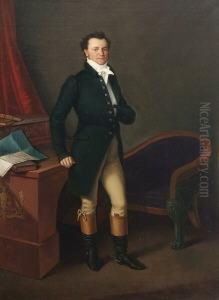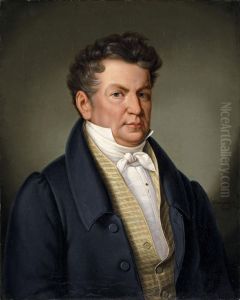Egidius Mengelberg Paintings
Egidius Linnig, later known as Egidius Mengelberg, was a German artist born on August 15, 1770, in Würzburg, Germany. He came from a family of artists, with his father, Johann Christian, being a sculptor and his brother, Wilhelm, also pursuing a career in the arts. Mengelberg initially trained under his father and later continued his education at the Academy of Fine Arts Vienna. His early career was marked by his work in the genres of portraiture and religious subjects, which were popular at the time.
In the late 18th and early 19th centuries, Mengelberg established himself as a painter and worked on several significant commissions. He was particularly known for his contributions to church interiors, where his skill in fresco painting and altarpiece creation was well-regarded. Mengelberg's style was influenced by the late Baroque and early Neoclassical movements, which is evident in his use of dramatic lighting, emotional expression, and careful attention to architectural details.
Around 1806, Mengelberg moved to the Netherlands, where he continued to work and teach, influencing Dutch art during the period. He was active in the artistic community and participated in the establishment of various cultural institutions. In 1820, he became a co-founder of the Amsterdam Society of Friends of the Arts (Kunstlievend Genootschap). Throughout his career, Mengelberg exhibited a strong dedication to the arts and contributed significantly to the cultural landscape of his time.
Egidius Mengelberg passed away on September 3, 1849, in Cologne. His legacy includes a body of work that reflects the artistic transitions of his era and the influence he had on the generations of artists that followed him. While he may not be as widely known as some of his contemporaries, Mengelberg remains an important figure in the study of German and Dutch art history.

